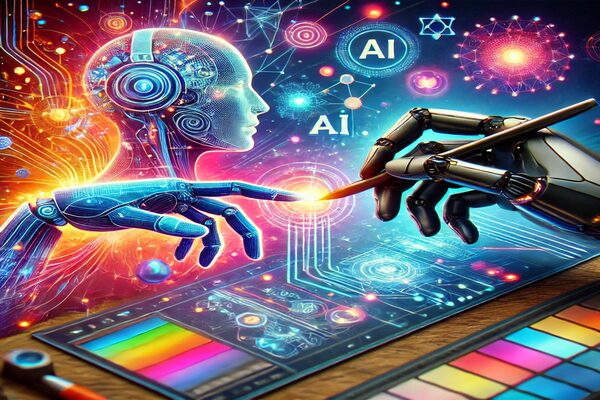In the rapidly evolving world of technology, the intersection of AI and design is creating a transformative impact. For digital creators, understanding the landscape of AI tools is crucial. This article provides an insightful AI tools comparison for designers, offering a comprehensive guide to help you navigate this dynamic field effectively.

Why AI is Crucial for Designers
The integration of AI in design is not just a trend; it’s a game-changer. AI tools enhance creativity, improve efficiency, and streamline workflows. For instance, AI can automate repetitive tasks, allowing designers to focus more on creativity and innovation.
Key Benefits of Using AI Tools
AI tools offer numerous benefits, including:
- Improved Accuracy: AI algorithms can analyze vast amounts of data to make precise predictions and adjustments.
- Time Efficiency: Automating routine tasks saves time, enabling designers to work more efficiently.
- Enhanced Creativity: AI can generate design options and suggest creative directions that designers might not have considered.
The Top AI Tools for Designers
Heres a look at some of the top AI tools available for designers:
1. Adobe Sensei
Adobe Sensei is an AI platform that powers Adobe Creative Cloud. It offers features like automated tagging, image recognition, and personalized recommendations that enhance the design process.
2. Canva’s Magic Resize
Canva’s Magic Resize tool uses AI to automatically resize designs for different platforms, maintaining consistency and saving time.
3. Daz 3D
For those involved in 3D modeling, Daz 3D offers AI-driven tools for realistic character creation and animation. Learn more about AI for 3D modeling.
Comparing AI Tools: What to Consider?
When comparing AI tools for design, consider the following:
Functionality
Evaluate the specific features each tool offers and how they align with your design needs.
Ease of Use
User-friendly interfaces and intuitive operations are crucial for seamless integration into your workflow.
Cost
Consider the pricing models and whether the tool provides value for money.
Integration
Check if the AI tool can easily integrate with other software you use.
The Future of AI in Design
The future of AI in design is promising, with advancements leading to more sophisticated tools. AI will continue to evolve, offering even more capabilities that enhance creativity and efficiency.
Challenges and Considerations
While AI offers numerous benefits, designers must navigate challenges such as data privacy concerns and the need for continuous learning to keep up with technological advancements.
AI and Responsive Design
AI tools are also playing a significant role in responsive design, ensuring that websites and applications look great on any device.
AI in Packaging Design
Explore how AI is revolutionizing packaging design, offering innovative solutions for branding and sustainability.
AI’s Role in Educational Content
AI tools are also enhancing the creation of educational content, with platforms like educational social media post makers offering tailored solutions.
External Perspectives on AI Tools
For further insights into AI tools for graphic design, visit this guide on AI tools in graphic design.
Conclusion
In conclusion, the integration of AI tools in the design sector is revolutionizing how designers work. By understanding and leveraging these tools, digital creators can enhance their creativity, improve efficiency, and stay ahead in the competitive design landscape.

FAQs
What are the best AI tools for graphic design?
Some of the best AI tools include Adobe Sensei, Canva, and Daz 3D, each offering unique features for designers.
How does AI improve design efficiency?
AI improves efficiency by automating repetitive tasks, allowing designers to focus on creativity and strategy.
Is AI replacing designers?
No, AI is not replacing designers. Instead, it complements their work by enhancing creativity and efficiency.







